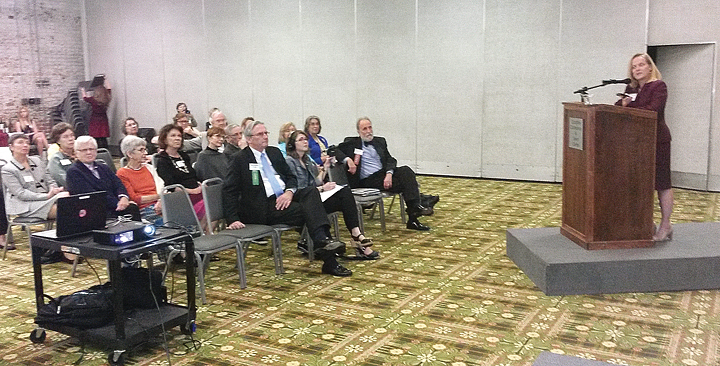Wilmington’s success in preserving historic buildings comes partly from a unique funding tool that buys buildings before they are destroyed, the leader of the nation’s largest historic preservation group said Tuesday, March 8.
In making her first-ever visit to the Port City, Stephanie Meeks, president and chief executive officer of the National Trust for Historic Preservation, came to help commemorate the twin anniversaries of the Historic Wilmington Foundation and the National Historic Preservation Act, both of which turn 50 years old in 2016.
“It certainly lives up to the reputation,” Meeks said of Wilmington’s historic district. “Wilmington is a city that gets it.”
Meeks said that Wilmington was one of only about two dozen cities in the country that used a “revolving fund” to help preserve buildings. She said that kind of funding tool would have been ideal in helping to preserve a nearly 120-year-old cottage torn down on Wrightsville Beach two weeks ago.
“Buying the property is the best option” for historic preservation, Meeks said. “A revolving fund can be used to step in and help groups purchase the property.”
Wilmington was the first city in the state to adopt a revolving fund, said George Edwards, Historic Wilmington Foundation executive director.
The revolving fund works by serving as a financial vehicle to provide loans to groups or individuals to buy properties for historic repairs and upgrades. Once the property is properly restored, it will be resold, but not before an easement is placed on the structure, preventing future owners from making any changes.
Started in 1984, the fund has been directly used in the preservation of at least 110 buildings in Wilmington.
“And the example that the fund sets has saved even more buildings,” Edwards said, adding that the revolving fund was used to help save the Coastline Convention Center where Meeks spoke to the public and members of the Historic Wilmington Foundation.
In a speech that reviewed how the federal historic preservation bill helped establish a register of 90,000 historic places, Meeks said that Wilmington is one of the American cities where the downtown is experiencing a “renaissance,” driven partly by the younger generation’s interest in historic buildings. Wilmington has 6,000 historic buildings in the eight national registry districts in the area.
“Preservation is a force of economic development in cities,” Meeks said. She added that the broader historic preservation campaign in America was “coming into our own as a movement.”
Kent Stephens, president of the Historic Wilmington Foundation board of trustees, agreed with Meeks’ assessment.
“Historic preservation is an economic engine. You can’t quantify it, but you can’t tell me it’s not,” he said. “It’s why people come here to visit.”
Edwards said that having Meeks visit will help Wilmington raise its profile as a historic city.
“It puts a spotlight on it,” Edwards said. “We like to hope that we serve as an inspiration to her.”
email [email protected]




